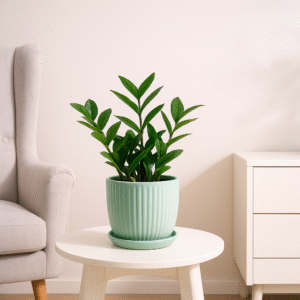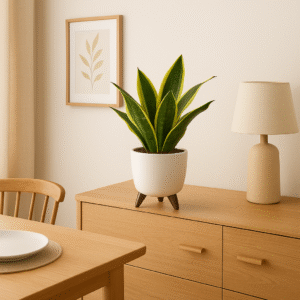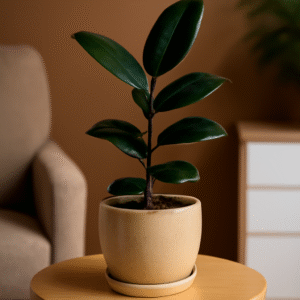In the heart of India’s bustling cities, where space is scarce and concrete jungles dominate, terrace gardening is fast becoming a green revolution. With a little planning and the right techniques, any unused rooftop can be transformed into a thriving garden full of vegetables, fruits, herbs, and flowers.
Whether you want to grow your own food, beat pollution, or simply enjoy a natural retreat at home, terrace gardening is a sustainable and rewarding solution.
This guide covers everything you need to know about starting a terrace garden in Indian cities—from planning and preparation to plant selection and maintenance.
Why Terrace Gardening is Perfect for Indian Cities
- Space Optimization: Rooftops provide valuable unused space that can be converted into productive gardens.
- Fresh & Healthy Food: Grow organic vegetables and herbs right at home.
- Reduced Pollution: Plants absorb carbon dioxide, helping improve air quality in polluted cities.
- Temperature Control: Terrace gardens lower heat absorption, reducing indoor temperatures.
- Mental Wellness: Gardening is therapeutic, reducing stress and promoting relaxation.
Step 1: Assess Your Terrace
Before setting up, evaluate your rooftop conditions:
- Weight Capacity: Ensure your terrace can handle the extra weight of soil, pots, and water. If needed, consult a civil engineer.
- Sunlight: Most vegetables and flowering plants need 5–7 hours of sunlight daily. Note which areas receive full sun, partial shade, or complete shade.
- Water Availability: A nearby tap or water source will make daily care easier.
- Drainage: Proper water outlets prevent waterlogging and protect your roof.
Step 2: Waterproofing and Safety
Waterproofing your terrace is crucial before setting up a garden. This prevents leakage into the building.
- Apply a waterproofing layer or plastic sheets under containers.
- Ensure good drainage systems so excess water flows out.
- Install railings or netting for safety, especially in high-rise buildings.
Step 3: Choose Containers & Pots
In terrace gardening, containers are key. Options include:
- Grow Bags: Lightweight, affordable, and easy to move.
- Clay Pots: Good for airflow but heavy.
- Plastic Pots: Durable and lightweight.
- Wooden or Cement Troughs: For large plants like fruit trees.
- Recycled Items: Buckets, crates, or barrels for budget-friendly gardening.
Tip: Ensure every container has drainage holes to avoid root rot.
Step 4: Select the Right Soil Mix
City terraces often need a light, well-draining soil mix:
- 40% Garden Soil
- 30% Compost (vermicompost, cow dung, or organic compost)
- 20% Cocopeat (for water retention)
- 10% Sand (for drainage)
Enrich soil with organic fertilizers like neem cake or bone meal for nutrient balance.
Step 5: Start with Easy-to-Grow Plants
For beginners, start small with low-maintenance plants:
Vegetables
- Tomatoes
- Chillies
- Spinach
- Brinjal (Eggplant)
- Okra (Ladyfinger)
Herbs
- Mint (Pudina)
- Coriander (Dhaniya)
- Tulsi (Holy Basil)
- Curry Leaves
Fruits
- Lemons (in large pots)
- Guava
- Papaya
- Pomegranate
Flowers
- Hibiscus
- Marigold
- Jasmine
Step 6: Watering & Irrigation
- Hand Watering: Ideal for small gardens.
- Drip Irrigation System: Saves water and ensures even distribution.
- Water early in the morning or evening to prevent evaporation.
- Avoid overwatering—check soil moisture before adding water.
Step 7: Fertilizers & Composting
Opt for organic fertilizers to keep your terrace garden chemical-free:
- Kitchen Waste Compost: Fruit peels, vegetable scraps, coffee grounds.
- Vermicompost: Nutrient-rich and improves soil structure.
- Liquid Fertilizers: Compost tea or cow dung slurry for quick absorption.
Tip: Set up a compost bin on your terrace to recycle daily kitchen waste into natural fertilizer.
Step 8: Pest Management
Urban terrace gardens may face pests like aphids, mealybugs, or mites. Control them naturally:
- Neem oil spray
- Soap water spray
- Garlic-chili spray
- Companion planting (e.g., marigolds repel insects)
Step 9: Design & Aesthetics
Your terrace garden can be functional and beautiful:
- Use vertical gardens or trellises for climbers.
- Place large pots along the corners.
- Create a mix of vegetables, flowers, and ornamentals.
- Add garden furniture for a relaxing retreat.
Step 10: Maintenance & Expansion
- Start small and expand gradually as you gain confidence.
- Rotate crops to keep soil healthy.
- Prune and trim regularly for better growth.
- Record planting dates and track growth for better planning.
Where to Buy Terrace Gardening Plants & Essentials
Starting a terrace garden in India is easier than ever with online nurseries like The Tarva.
Shop essentials at thetarva.com:
- Vegetable Saplings – Tomatoes, chilies, brinjals.
- Medicinal Herbs – Tulsi, mint, coriander.
- Flowering Plants – Hibiscus, marigold, jasmine.
- Planters & Pots – Lightweight grow bags and decorative pots.
With doorstep delivery across India, The Tarva makes it simple to set up your dream terrace garden.
Conclusion
Terrace gardening in Indian cities is not just a hobby—it’s a lifestyle shift towards healthier living, sustainability, and reconnecting with nature. With thoughtful planning, organic practices, and the right choice of plants, your rooftop can be transformed into a green oasis that offers food, beauty, and peace.
Even if you start small with just a few herbs or vegetables, the joy of harvesting fresh produce from your own terrace is unmatched. So, take the first step today and let your rooftop bloom into a thriving garden.




